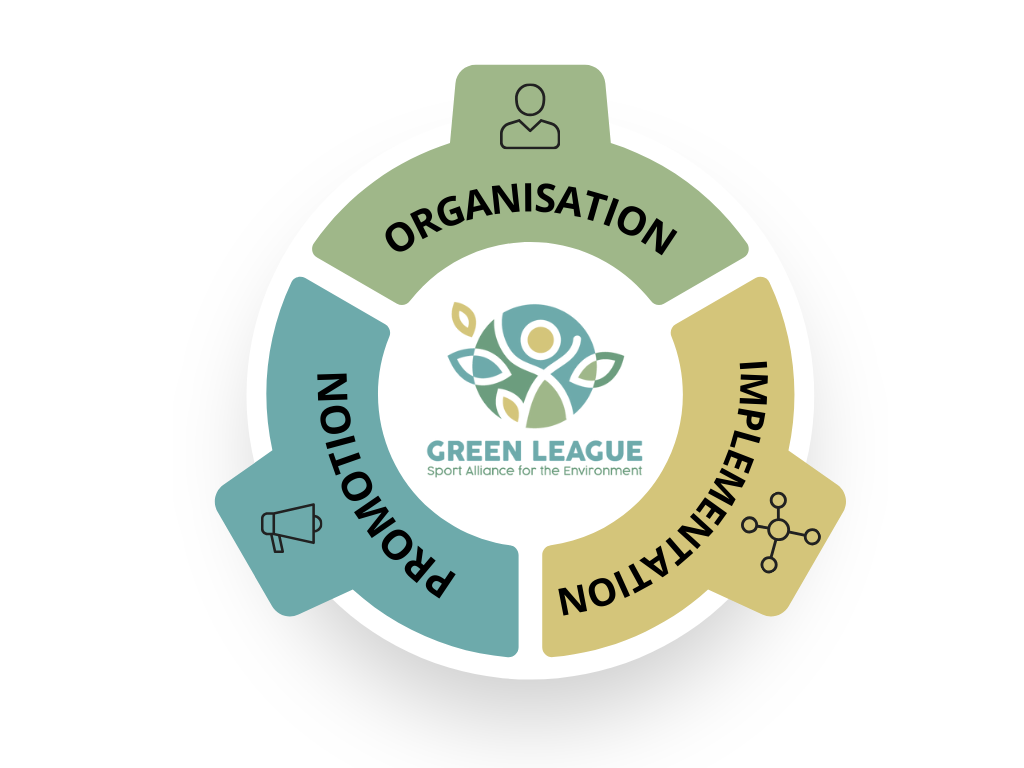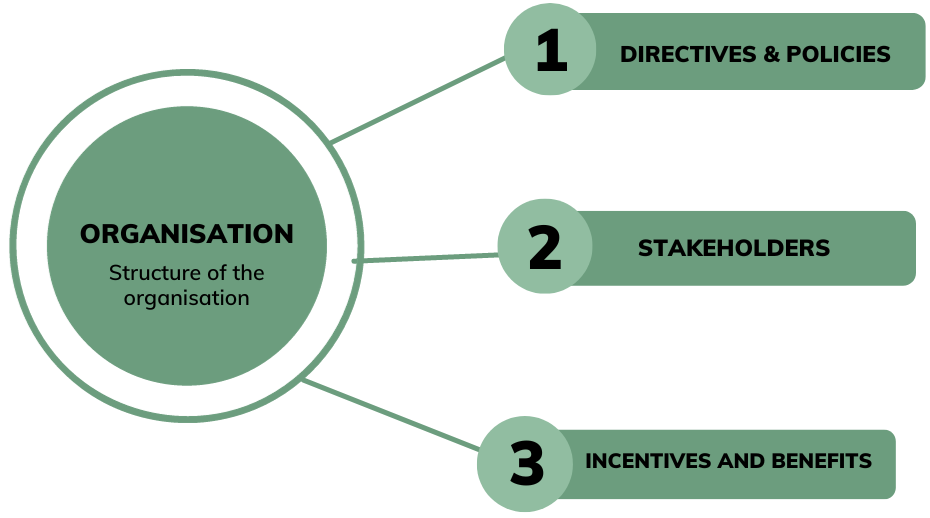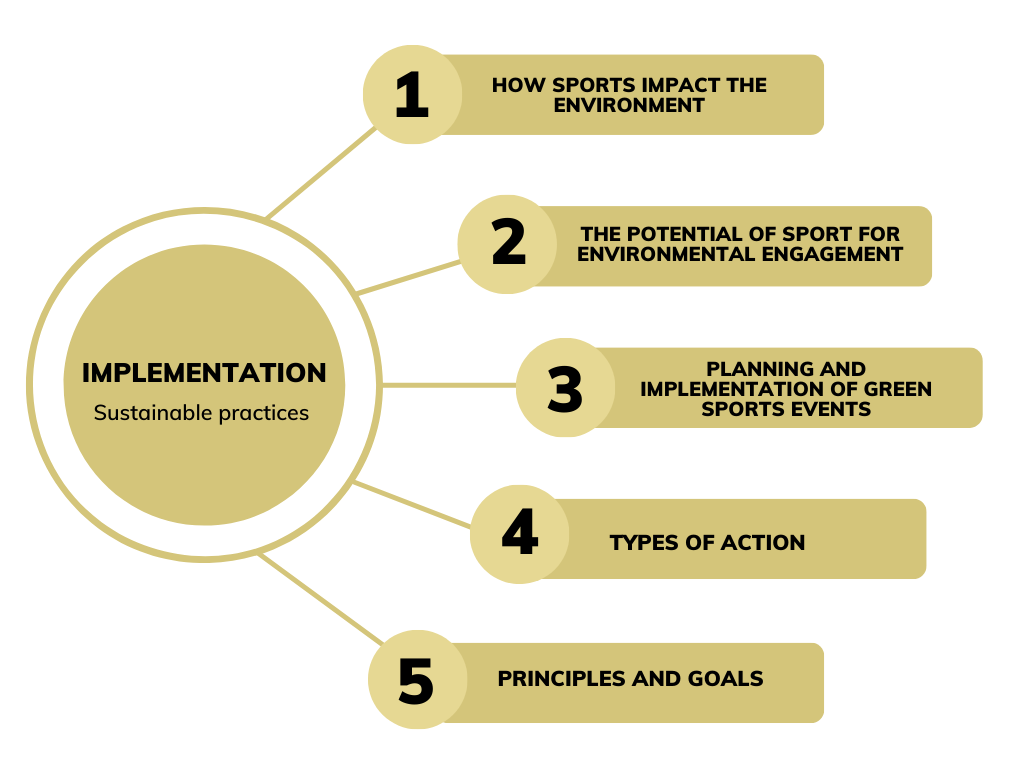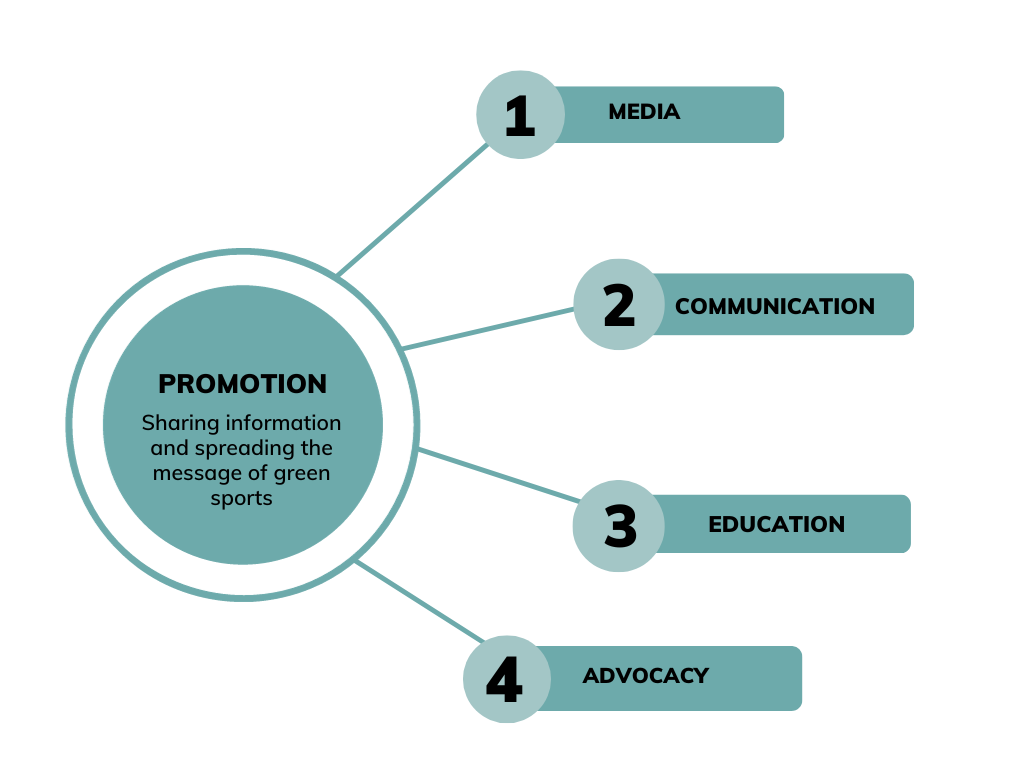- Home
- Green League Model
Green League Model
Introduction to the Green League Model
In recent years, there has been a growing awareness of the impact of human activities on the environment. As a result, many individuals and organisations have taken steps to reduce their carbon footprint and promote sustainability. In this context, the concept of “green sports” has emerged as a way to promote environmentally responsible practices in the world of sports.
A green sports organisation is one that promotes sustainable and environmentally responsible practices in all aspects of sports. This can include everything from the design and construction of sports facilities to the day-to-day operations of sports teams and events. The goal of a green sports organisation is to minimise the negative impact of sports on the environment while still providing an enjoyable and competitive experience for athletes and fans.
One of the main activities of a green sports organisation is to promote sustainable practices in sports facilities. This can include the use of renewable energy sources such as solar or wind power, the implementation of energy-efficient lighting and HVAC systems, and the use of sustainable building materials in the construction of sports facilities.
Another important activity of a green sport organisation is to promote sustainable commuting for fans and athletes. This can include the promotion of public transportation, carpooling, and biking to sports events, as well as the provision of bike racks and other amenities for cyclists.
In addition to these activities, a green sports organisation may also promote sustainable practices in the day-to-day operations of sports teams and events. This can include everything from the use of eco-friendly cleaning products to the reduction of waste through recycling and composting.
Overall, the Green League Model emphasises the importance of creating a culture of sustainability within the sport organisations and sport professionals and implementing environmentally friendly practices throughout all aspects of the sports organisations’ operations. It also recognizes the importance of promoting sustainability both within the sport organisation and externally in order to create a more sustainable future for all.
By adopting this model, sport organisations and sport professionals can improve their performance, reduce their environmental impact, and contribute to a more sustainable future.
About the Model
The Green League model is a framework that organisations can use to promote sustainable and environmentally friendly practices. It is based on three main aspects: organisation, implementation, and promotion.

Organisation
The first aspect of the Green League model focuses on the structure of the organisation. This involves creating a culture of sustainability within the organisation (sport club). This involves incorporating sustainable practices into the organisation’s policies and procedures, as well as establishing environmentally friendly practices into the day-to-day operations.
The organisational base of a green sports model consists of several key elements, including existing legislation/policies and directives, stakeholders and level of operation.
For further information download the document below.

Directives and Policies
To structure a green sport organisation, it is essential to be aware of any national or international directives and policies related to sustainability. Sport organisations should adhere to these directives and policies to reduce their environmental impact.
There are various directives and policies that are being established at both the national and international levels to promote green sports.
The sport organisation itself should also have a policy of operation. The policy of a green sports organisation should be centred on sustainability and environmental responsibility. This policy should guide all activities and decisions of the organisation and should be communicated clearly to all stakeholders.
For further information go to page 19 of the Organisation chapter PDF.
Stakeholders
To be successful, green sport organisations must engage and involve various stakeholders, including sport organisations, the local community, athletes, fans, sponsors, public authorities, and intermediaries/supporters.
Sports organisations should partner with environmental organisations to help create policies and promote sustainable practices. Engaging the local community is also essential to promote sustainable practices, raise awareness, and encourage participation in green sport activities. Intermediaries and supporters, such as sponsors and vendors, also play an important role in promoting sustainable practices.
For further information page 21 of the Organisation chapter PDF.
Incentives and benefits
Green sports organisations should consider the reach of their activities and the level of commitment required to promote sustainability. This includes international, national, and local levels.
Thus, the level of operation of a green sports organisation can vary, from local grassroots organisations to large international associations. The organisation should operate at a level that is appropriate for its resources and goals, while still promoting sustainable practices in sports.
At the international level, sports organisations can promote sustainability by adhering to international policies and partnering with environmental organisations. At the national level, organisations can implement sustainable practices and policies that adhere to national directives. At the local level, organisations can engage the local community and promote sustainability through grassroots efforts.
For further information page 24 of the Organisation chapter PDF.
Implementation
The basis of a green sport model involves the implementation of sustainable practices throughout the sporting organisation and requires several key elements to be kept in mind, including: the impact of sport on the environment, the potential of sport for environmental engagement, the planning and implementation of green sports, the type of activity, and the principles and goals.
For further information download the document below.

How sports impact the environment
Before implementing sustainable practices, it is essential to understand the impact of sports on the environment. Sports events and activities can have a significant negative impact on the environment. Understanding these impacts can help organisations create effective sustainable policies and practices.
For further information page 26 of the Implementation chapter PDF.
The potential of sport for environmental engagement
Green sports have the potential to create a positive impact on the environment and social and economic systems. They can also promote healthy and sustainable lifestyles, improve social cohesion, and generate economic benefits. Sport can be a powerful tool for raising awareness and promoting sustainable practices. Green sports initiatives can inspire fans, players, and other stakeholders to adopt sustainable practices in their daily lives.
For further information page 27 of the Implementation chapter PDF.
Planning and implementation of green sports events
To plan and implement green sports activities and events, clubs can adopt a sustainable framework that includes policies, goals, and action plans. The framework can focus on various aspects such as energy and water conservation, eco-friendly food and beverage options, waste management strategies, sustainable transportation, and procurement. They can also implement green procurement policies for products and services. This includes sustainable sourcing of materials for equipment and infrastructure.
For further information page 28 of the Implementation chapter PDF.
Types of Action
Green sports activities should involve the entire sports chain, from design and construction to operations and post-event management.
Organisations can undertake different types of actions to promote green sports, such as awareness-raising activities, events and infrastructure projects.
Awareness-raising activities, such as workshops, seminars and campaigns, can promote sustainable practices and encourage participation in green sports activities.
Events, such as green sports tournaments or green sports competitions, can also promote sustainable practices and create awareness on environmental issues.
Infrastructure projects, such as green stadiums or solar-powered sports facilities, can also promote sustainable practices and reduce the environmental impact of sports activities.
For further information page 35 of the Implementation chapter PDF.
Principles and goals
The principles refer to two aspects. The goals we want to achieve through green sports at a general level and the principles of event implementation, which refer to the objectives of the event itself.
Green sports activities and events should prioritise safety, inclusion, equality and collaboration, as well as promoting sustainability. By following these principles, organisers can create a safe, welcoming and sustainable environment for all participants, spectators and stakeholders.
For further information page 39 of the Implementation chapter PDF.
Promotion
Promotion includes the process of sharing information and spreading the message of green sports. Promotion activities must be tailored to the needs of each stakeholder and may include information on the sports organisation’s policies, social media campaigns, e-newsletters, conferences and other awareness-raising activities.
The final aspect of the Green League Model involves promoting sustainability both within the organisation and externally. This may involve marketing sustainable products or services, participating in environmental campaigns or initiatives, or working with other organisations to promote sustainability.
The basis for promoting a green sports model consists of several key elements, including: media, communication, education and advocacy.
For further information download the document below.

Media
Media can be important partners in promoting green sports and raising awareness on the environmental impact of sports activities. Green sports organisations should seek to engage with the media and use them as platforms and tools for promoting their activities.
For further information page 42 of the Promotion chapter PDF.
Communication
Communication is key to promote the message of a green sport organisation. The organisation should work to clearly communicate its policy and goals and ensure that stakeholders are aware of the benefits of sustainable practices. Communication should be transparent, informative, and engaging, and should be tailored to the specific needs of each stakeholder group, including athletes, fans, sponsors, and the community at large.
For further information page 44 of the Promotion chapter PDF.
Education
Training and capacity building are essential to ensure that green sports practices are adopted and maintained over time. Examples include training athletes and coaches in sustainable practices, building the capacity of facility managers in the design of green buildings, and educating fans about the environmental impact of sporting activities.
For further information page 47 of the Promotion chapter PDF.
Advocacy
Advocacy can be described as an activity that aims to influence actions and decisions inside the political, social or economic system addressing a particular issue.
For further information page 49 of the Promotion chapter PDF.

Funded by the European Union. Views and opinions expressed are however those of the author(s) only and do not necessarily reflect those of the European Union or the European Education and Culture Executive Agency (EACEA). Neither the European Union nor EACEA can be held responsible for them. Η υποστήριξη της Ευρωπαϊκής Επιτροπής για την παραγωγή του παρόντος δικτυακού τόπου δεν συνιστά έγκριση του περιεχομένου, το οποίο αντανακλά τις απόψεις μόνο των συντακτών, και η Επιτροπή δεν μπορεί να θεωρηθεί υπεύθυνη για οποιαδήποτε χρήση των πληροφοριών που περιέχονται σε αυτόν. Подкрепата на Европейската комисия за създаването на този уебсайт не представлява потвърждение на съдържанието, което отразява вижданията само на авторите и Комисията не носи отговорност за използването на съдържащата се в сайта информация. Tento projekt byl financován s podporou Evropské komise. Tato publikace odráží pouze názory autora a Komise nenese odpovědnost za jakékoli použití informací v ní obsažených De steun van de Europese Commissie voor de productie van deze publicatie houdt geen goedkeuring van de inhoud in die alleen de mening van de auteurs weerspiegelt, en de Commissie kan niet verantwoordelijk worden gehouden voor enig gebruik dat van de informatie in deze publicatie wordt gemaakt. Podrška Europske komisije za proizvodnju ovih objava ne predstavlja I njezino odobrenje sadržaja koji odražavaju samo stavove autora i Europska Komisija se ograđuje od odgovornosti za bilo kakvu upotrebu informacija sadržanih u njima. Le soutien de la Commission européenne à la production de cette publication ne constitue pas une approbation du contenu qui reflète uniquement les opinions des auteurs, et la Commission ne peut être tenue responsable de l’usage qui pourrait être fait des informations qu’elle contient. Die Unterstützung der Europäischen Kommission für die Erstellung dieser Veröffentlichung stellt keine Billigung des Inhalts dar, der nur die Ansichten der Autoren widerspiegelt, und die Kommission kann nicht für die Verwendung der darin enthaltenen Informationen verantwortlich gemacht werden. O apoio da Comissão Europeia à produção desta publicação não constitui um aval do seu conteúdo, que reflete unicamente o ponto de vista dos autores, e a Comissão não pode ser considerada responsável por eventuais utilizações que possam ser feitas com as informações nela contidas. El apoyo de la Comisión Europea a la producción de esta publicación no constituye una aprobación de su contenido, que refleja únicamente las opiniones de los autores, y la Comisión no se hace responsable del uso que pueda hacerse de la información contenida en ella. Questo progetto è stato finanziato con il sostegno della Commissione Europea. L'autore è il solo responsabile di questa pubblicazione e la Commissione declina ogni responsabilità sull'uso che potrà essere fatto delle informazioni in essa contenute. Podpora Evropske komisije pri izdelavi te publikacije ne pomeni odobritve vsebine, saj odraža le stališča avtorjev in Komisija ne more biti odgovorna za kakršno koli uporabo informacij, ki jih vsebuje. Funded by the European Union. Views and opinions expressed are however those of the author(s) only and do not necessarily reflect those of the European Union or the European Education and Culture Executive Agency (EACEA). Neither the European Union nor EACEA can be held responsible for them.
Project Number : 101050262